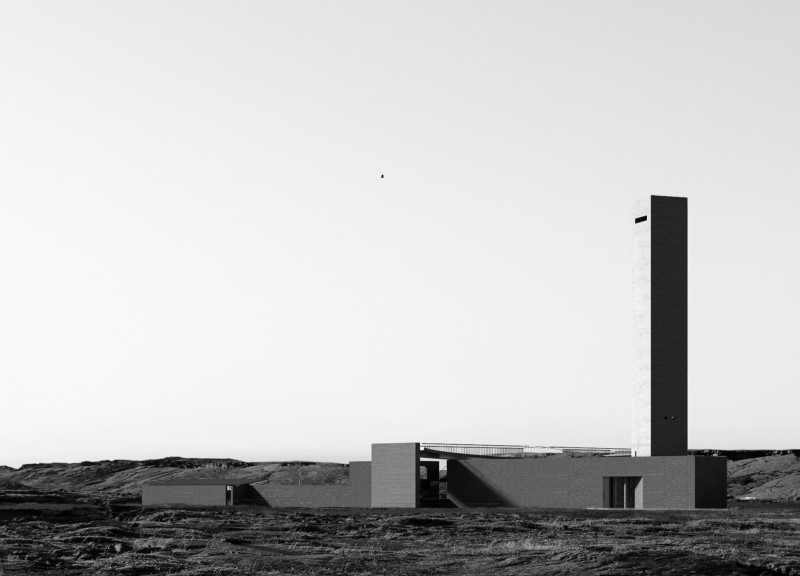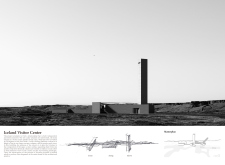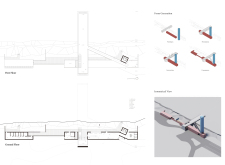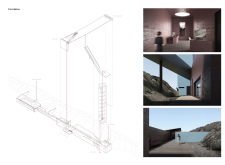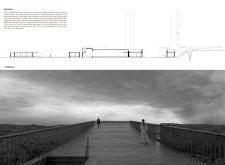5 key facts about this project
The Iceland Visitor Center integrates architecture with its surrounding geology. Located in a region defined by unique tectonic formations, the center serves as a place for visitors to engage with the landscape. The design consists of two cubic volumes: one that functions as a visitor center aligned with a significant geological crack and another that is twisted to face true north. This arrangement invites exploration and highlights themes of independence and connection to nature.
Architectural Language
The design employs a clear and distinct language, focusing on the idea of fragmentation. Three identical volumes rotate in relation to one another, which challenges the conventional notion of unity in architecture. This layout allows visitors to experience different viewpoints of the landscape, fostering a deeper interaction with both geological features and expansive vistas.
Structural Features
The large viewing platform is a key component of the design, elevated to 6 meters by two substantial concrete columns. This feature enhances visibility of the surrounding topography and provides a space for reflection. By offering an open view of the landscape, it facilitates a strong connection between the building and its natural setting.
Interior Experience
Inside, the layout features functional lounges and offices positioned along the sides of the main block, while significant openings create the entrance foyer and café. These long, narrow spaces permit natural light to enter, creating an inviting atmosphere that suggests a sense of enclosure similar to that of a cave.
Materiality and Context
The primary material used is dark red concrete, which helps to create a visual link with the environment. This choice strengthens the building's relationship with its landscape while contributing to the overall visual quality.
At the end of the visitor experience, a notable 54-meter-long platform connects the Eurasian Plate and the American Plate. This connection provides a tangible interaction with the geological phenomena that define the site and immerses visitors in the tectonic history of Iceland. The design feels integrated into the rugged landscape, allowing a deeper understanding of the natural world.


